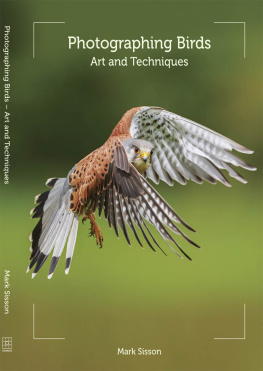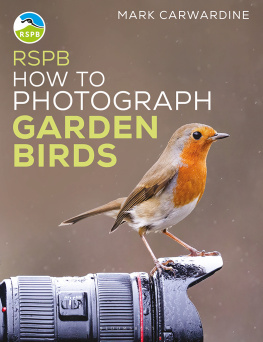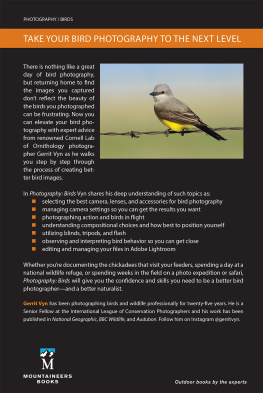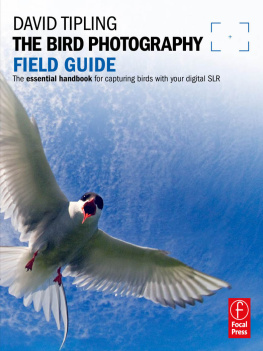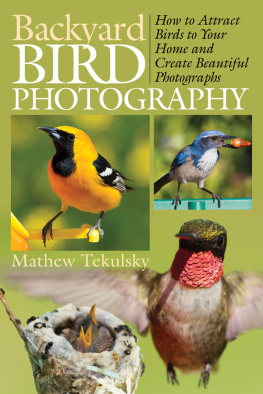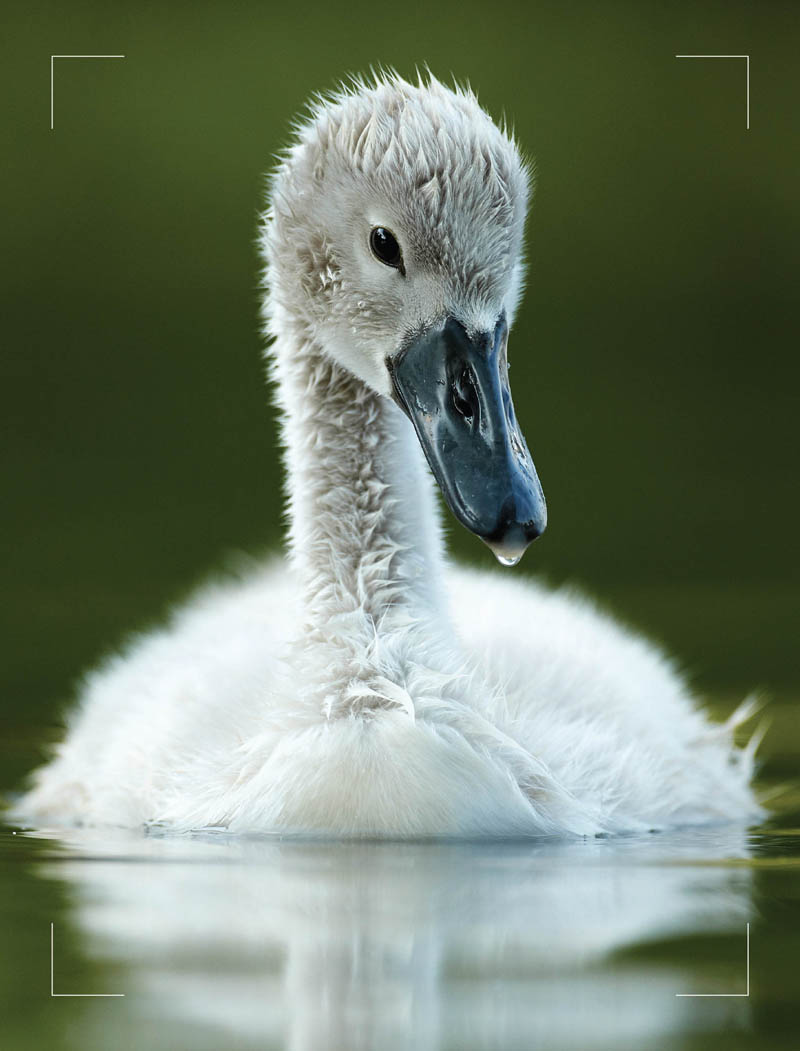Photographing Birds
Art and Techniques
Mark Sisson

CROWOOD
First published in 2014 by
The Crowood Press Ltd
Ramsbury, Marlborough
Wiltshire SN8 2HR
www.crowood.com
This e-book first published in 2014
Mark Sisson 2014
All rights reserved. No part of this publication may be reproduced or transmitted in any form or by any means, electronic or mechanical, including photocopy, recording, or any information storage and retrieval system, without permission in writing from the publishers.
British Library Cataloguing-in-Publication Data
A catalogue record for this book is available from the British Library.
ISBN 978 1 84797 714 4
Frontispiece: Mute Swan cygnet Cygnus olor.
Acknowledgements
Bird photography, like all aspects of nature photography, is generally a very solitary profession. In spite of this there are a number of people who have helped both in terms of career in this field and the love of the natural world that took me down this path in the first place. Firstly my family: my wife Caroline, our children and my parents have all had to put up with my long absences and at times obsessive nature in pursuit of my work, but all have been hugely supportive in the process. Professionally speaking my Natures Images colleagues Danny Green, Paul Hobson and Edwin Kats have been among the many photographers who have inspired and aided my learning in this field: a process that never ends. Finally the many organizations I have had and still enjoy the pleasure of working for, including Shropshire Wildlife Trust and the RSPB to name only a couple: you all do great conservation work and I hope my images are of genuine help and use in your causes.
CONTENTS
Introduction
T here are many routes into the world of bird photography. For some it is a natural and these days reasonably affordable addition to the record-keeping that many keen ornithologists undertake. For those starting from a photographic knowledge base, it offers the excitement of one of the most challenging genres of photography there is, and certainly one that at times tests even modern high-specification cameras to their limits. For many, however, it is part of a desire to experience, enjoy and interpret an integral part of the natural world, and probably the most visible, varied and accessible to them in terms of subject, wherever they may live.
Whether or not any or even all of these apply to you, there is no doubt that bird photography is a pastime that has increased dramatically in recent years with the emergence of high-specification and in real terms significantly more affordable digital SLR cameras and incredibly fast-focusing long lenses. The days of expensive processing of slides taken using a split-prism manually pre-focused wind-on camera are now well and truly gone. There is also a plethora of individuals and companies offering photographic experience days, short-breaks and longer adventures focused on bird photography, so the accessibility of stunning subject material is now just a swipe of a credit card away! You only have to spend a short while surfing the internet to come across image after colourful image of birds in all manner of locations and with ever-increasing standards of creativity in their capture, so if this really is your area of interest then its as good a time to start as any.
All of that said, there is still, as in so many aspects of life, no better way to approach things than by really understanding your subject, really understanding your working tools and then looking to develop your own style and approach, and you should find some solid building blocks and pointers towards this in this book. The one thing the book wont be able to teach you, though and probably the greatest attribute any photographer of any aspect of the natural world can have is patience. Our modern lifestyles make it all too easy to change channels if were bored and constantly keep in touch with friends or colleagues on whatever portable device we happen to have this year. While many of these technologies can help the process of bird photography, they simply cannot replace the need for patience, observation and time spent watching, learning and interpreting the behaviour of your photographic subject. Alongside technical, creative and practical insights these pages therefore look to offer the beginner and enthusiast some pointers to not simply achieving a more consistent and better standard of image, but also developing the mindset and outlook that will help them do so.
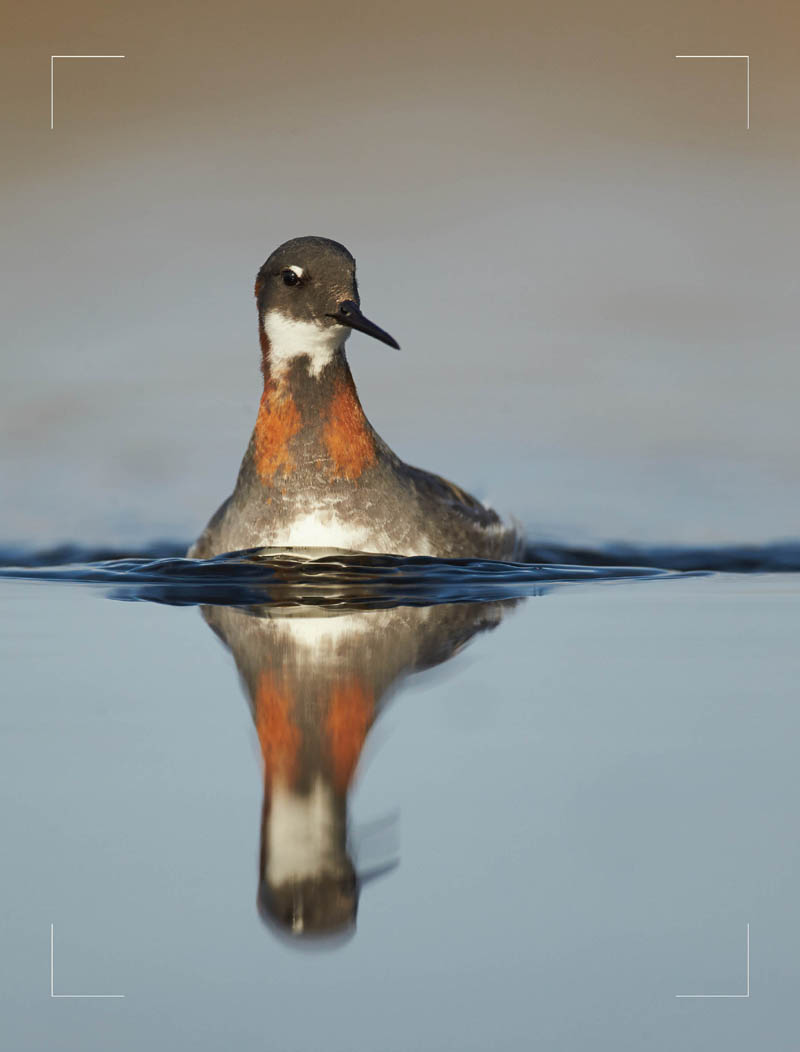
Fig. 0.1
Red-necked Phalarope Phalaropus lobatus wading in the shallows of Lake Myvatn, Iceland. Canon 1Dx, 500mm + 1.4 converter, f5.6, 1/4000sec, ISO 800.
Chapter 1
Equipment
CHOOSING A DIGITAL SLR
If this book had been written even just ten years ago the decision-making process when it comes to camera selection would have been far more complicated than it is today. Digital cameras in their various guises were relatively new on the market and in terms of final image quality simply didnt match up to a well-taken slide or transparency.
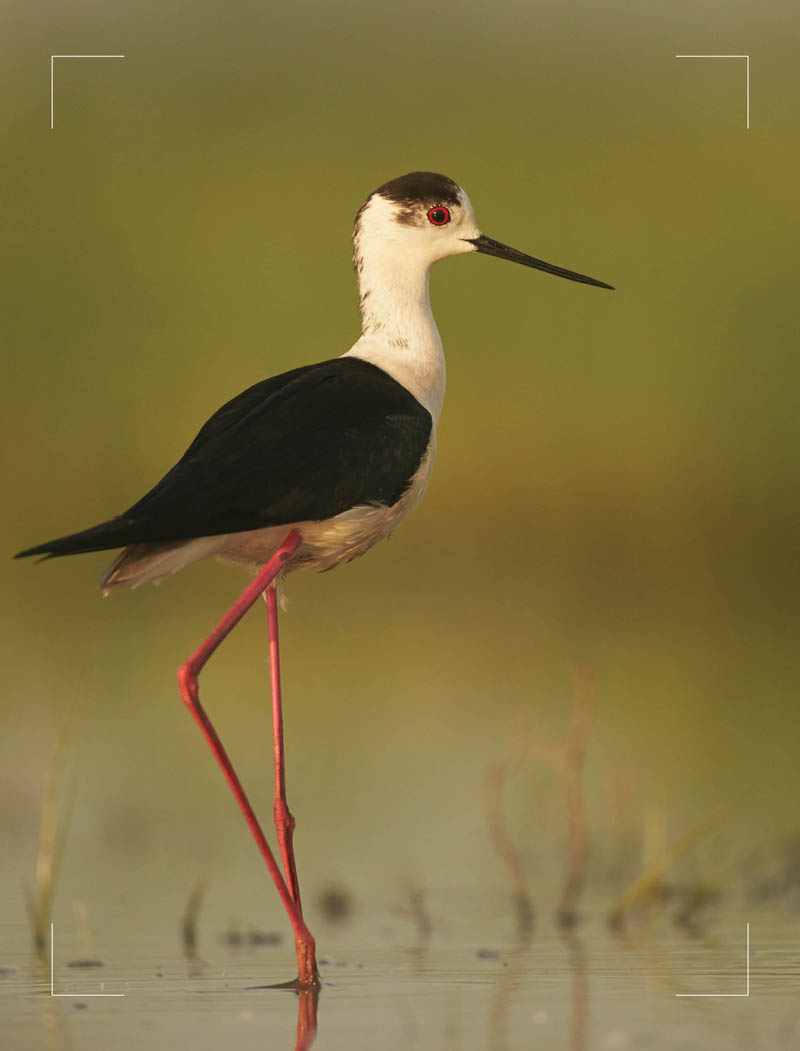
Fig. 1.1
Black-winged Stilt Himantopus himantopus in the wetland area of Hortobagy National Park, Hungary. Canon 1Dx, 500mm +1.4 converter, f5.6, 1/2000sec, ISO 1600.
Today its almost impossible to find anyone working seriously in the field of wildlife photography who doesnt rely exclusively on a digital camera and this will almost definitely be an SLR (single lens reflex) camera a system which allows interchangeable lenses to be added to a camera body, the viewfinder of which provides a view which looks directly through the lens thanks to a mechanical mirror and pentaprism inside. When the shutter is pressed to take an image the mirror swings out of the way, allowing the lens to project light through the aperture onto a digital sensor at the rear of the camera, a process that generally takes a fraction of a second. Although the zoom (or magnification) capabilities of many so-called bridge cameras are indeed quite significant, and there are even now mirrorless interchangeable lens camera systems, these styles of cameras do have limitations in terms of the amount and degree of control you can really have over them. They also very often have a significant delay between pressing the shutter and taking the image that will soon have you wishing you had spent that bit more on an SLR in the first place.
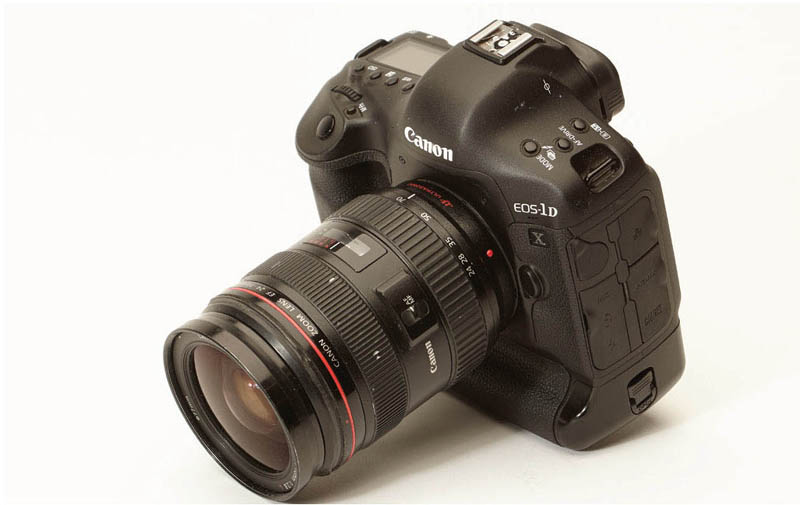
Fig. 1.2
A modern, professional-specification digital SLR.
It is not the authors place to advise on a specific brand or model of SLR, but in making that choice for yourself it makes sense to be guided by a number of pointers, such as the breadth of camera bodies and lenses that the manufacturer has to offer a good indication of their range and a quick bit of researching on what kit the photographers you might aspire to image-wise are using can be a good starting point. It generally comes down to a couple of choices, either of which will see you right. Beyond making a decision as to whether a full-frame or crop-sensor body is your best bet (

